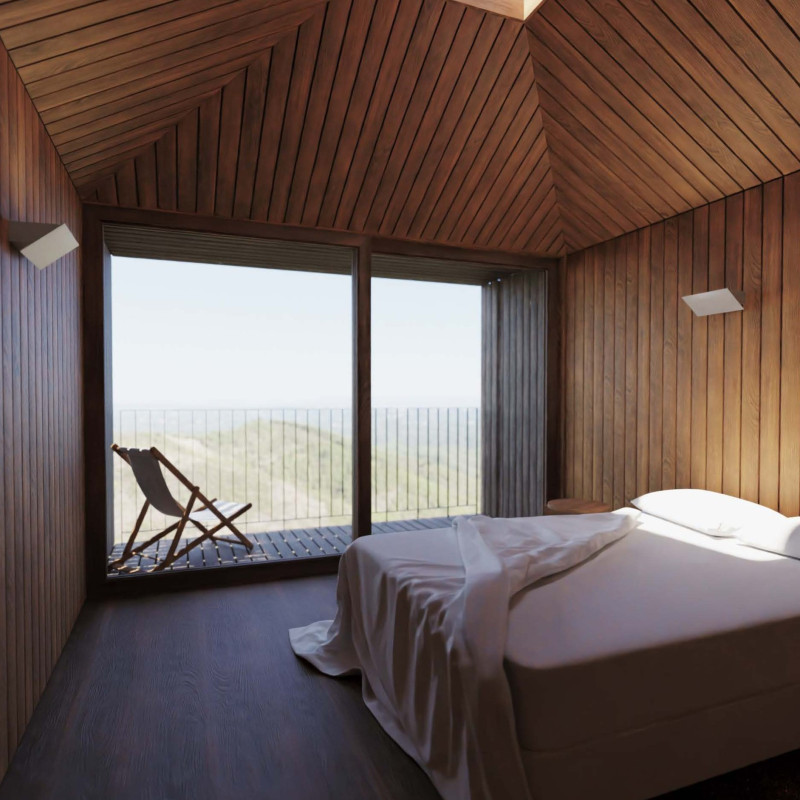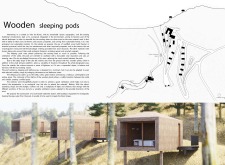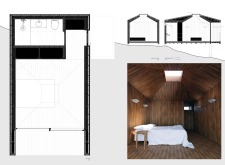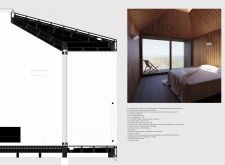5 key facts about this project
Set in the peaceful landscape of Vale de Moses, wooden sleeping pods are designed to blend into the natural surroundings. The proposal takes inspiration from the local topography and traditional building styles, aiming to create a retreat that enhances the connection between people and nature. The design concept focuses on shapes that resemble the nearby trees, creating a harmonious link with the environment.
Orientation and Layout
The sleeping pods are positioned to face southeast. This allows for increased sunlight and offers impressive views of the valley. Such careful planning enriches the users' experiences while filling the interiors with natural light. Privacy is a crucial consideration, with the layout designed to minimize sightlines between pods, ensuring that solitude is preserved for all occupants.
Structural Design
Four wooden pilotis elevate the structure above the ground. This design allows flexibility in pod placement while creating a sense of lightness, making the volumes appear as if they are floating. Inside, the layout is simple yet functional. Areas for entry, sleeping, and bathing are designed with accessibility in mind, accommodating individuals with mobility challenges.
Material Selection
Sustainability features prominently in terms of materials and design choices. Modified wood is used for the exterior, selected for its resilience and low maintenance. Inside, locally sourced Portuguese pine wood emphasizes a commitment to the environment. The placement of windows not only provides ventilation but also regulates temperature, improving the indoor climate and extending the lifespan of materials.
Ecological Integration
A small water treatment station employing Ecodepur technology is integrated into the design. This system processes grey water from the sleeping pods, allowing it to be reused for irrigating the forest around the site. This thoughtful addition reflects a dedication to environmental stewardship, ensuring a balance between the built environment and nature.
Large windows and balconies in the sleeping areas create an inviting atmosphere while connecting occupants to the valley. This design invites moments of reflection and relaxation, all while offering unobstructed views of the serene landscape.




















































